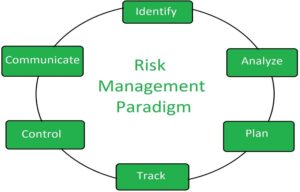9 Effective Ways to Support Students in Their Learning

Whether you are the teachers, parents, or well-wishers, most of you always wish that your student would do the best in their study. You know it could happen when you will provide all the requisite support to them and facilitate their study. The write-up is a good read if you are looking for ideas about how to support a student in their learning. The ideas are as follows:
1. Create a good study place
Whether a student is at an educational institute, library, or home, their study space should be the one that can facilitate their study. You should help them to have a good space for learning. For creating such a space, you can provide a set of table & chair, a wooden table lamp, textbooks, and allied stationary.
2. Encourage them for active learning
Engaging all the students boosts learning. And for their complete engagement, you can provide them with hands-on activities. As per your need, create a small group of students and produce project-based assignments to them. Project-based assignments facilitate collaborative and active learning. At the initial stage, provide them all the required instructions so that they could complete the projects easily.
3. Give models
Many studies have proved that modeling is an exciting and supportive teaching tool. As per the studies, students learn the things more accurately and faster when they come across a new skill in action. Get the opportunity and try to include modeling in your lesson plans before you start instructing students. You should give enough time to the students with disabilities so that they could work directly with their friends studying in the same class. Further, you should watch them model essential for social and academic skills.
4. Provide choices to students
Students differ from each other in their learning styles and capabilities. Some of them love to solve challenging tasks while some start with simple and go to the challenging one later on. As a teacher or parent, you should let them complete the tasks as per their choices. Further, let them have a little control over the schedule of doing the tasks. With this, you will respect every student’s individuality, requirements, and strengths.
5. Uplift their participation
When you want maximum students in your class to do their best, you must provide a lot of opportunities for them to give their response. Apart from letting each student get engaged more actively in their learning, this technique enhances their receipt of positive reinforcement. Give permission to the students with different requirements and strengths to answer the queries differently – like speaking in place of writing and vice versa.
6. Utilise proven strategies in your instruction/teaching
You should inquire what works the best for students. And for this, you should read the studies done on the latest strategies for inclusive classrooms. Think of trying the strategies like progressive and constant time delay, least-to-most prompting, most-to-least prompting, and allied instruction strategies supported with strong proof of effectiveness if you have no strategy till now. Before you apply a strategy, you should match it with the particular requirements and strengths of your pupils.
7. Value practical more than theory
After giving theoretical instructions, you should allow students to practice the same if the topic allows you for it. Doing a task/job practically enables a student to keep it in their mind for a more extended time. Further, practical guidance assists a student to master a skill more quickly.
8. Boost participation in extracurricular activities
You should look for the ideas/steps that could enhance a student’s engagement in community and extracurricular activities. The more chances you will give your students to participate in extracurricular activities such as day camps, sports, and science clubs the more they will be able to refine their skills.
9. Make modifications
You shouldn’t make the learning process harder for students. While teaching new skills, you should be ready to modify the steps if you notice that modification is required to facilitate students in their learning of new skills. Select the appropriate steps if you are instructing students how to cook a particular food.
Conclusion
Supporting a student in their learning depends on several things and strategies. Instead of being strict to a few, you should be flexible enough to apply the strategies that could help you attain your expected goals while instructing students at any educational institute at any level.






